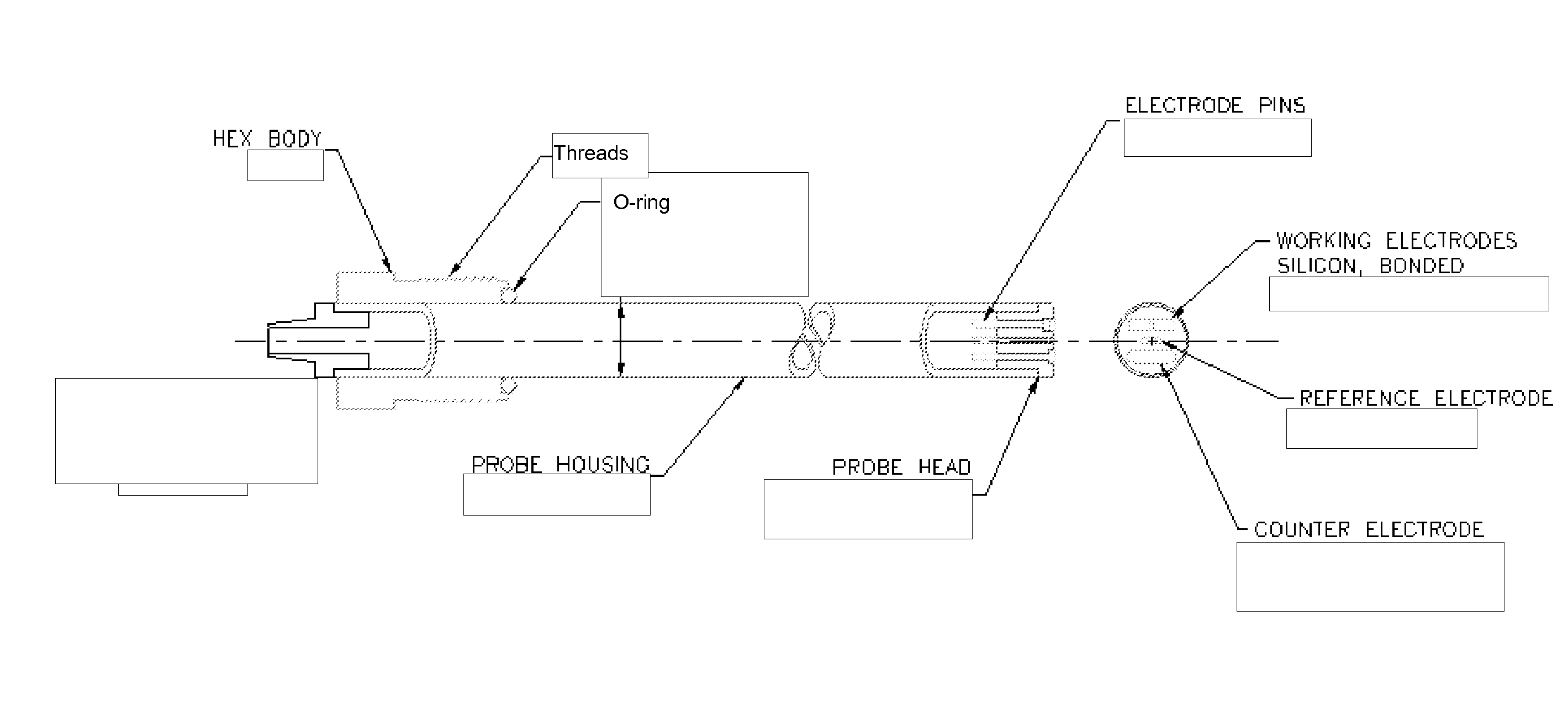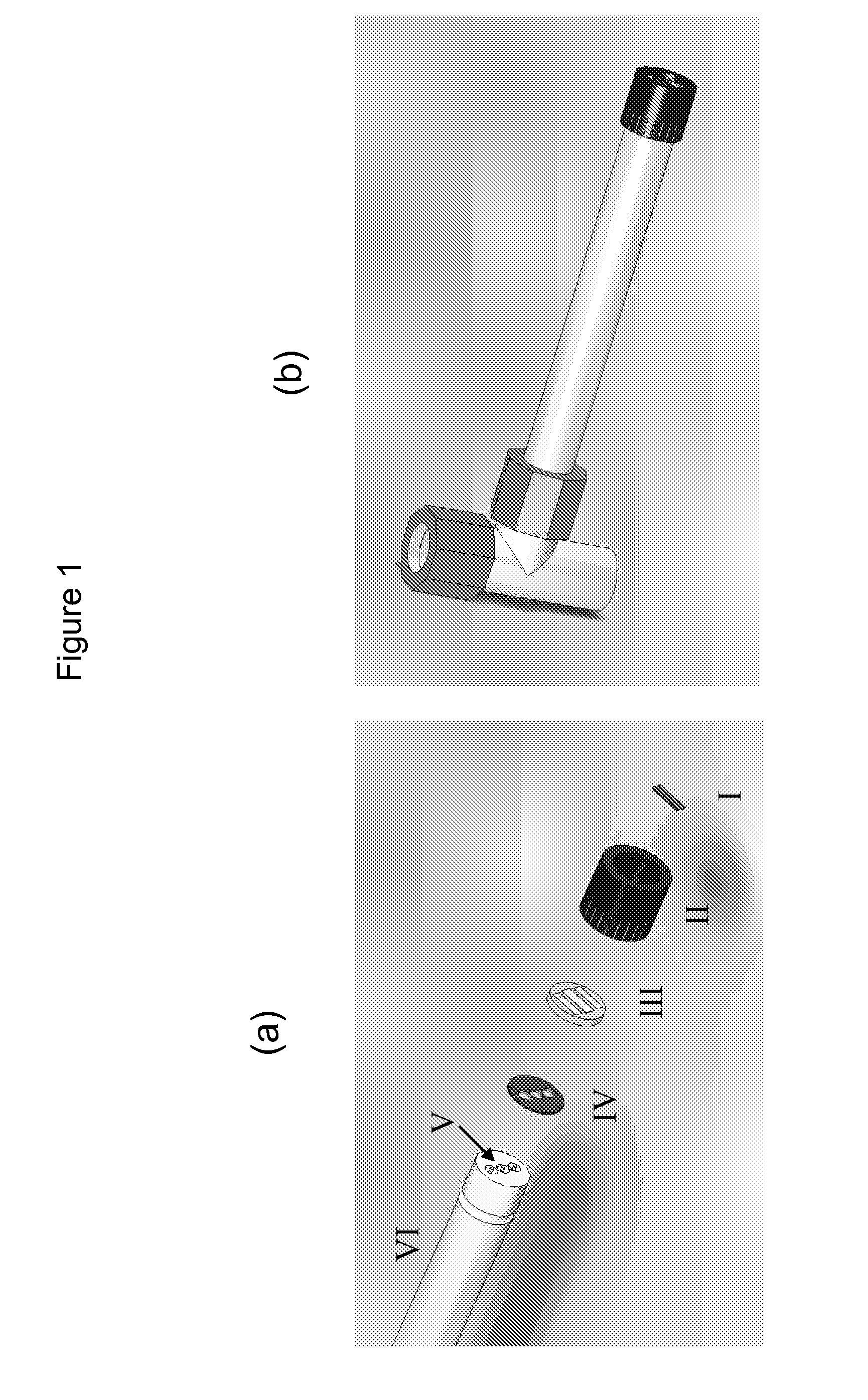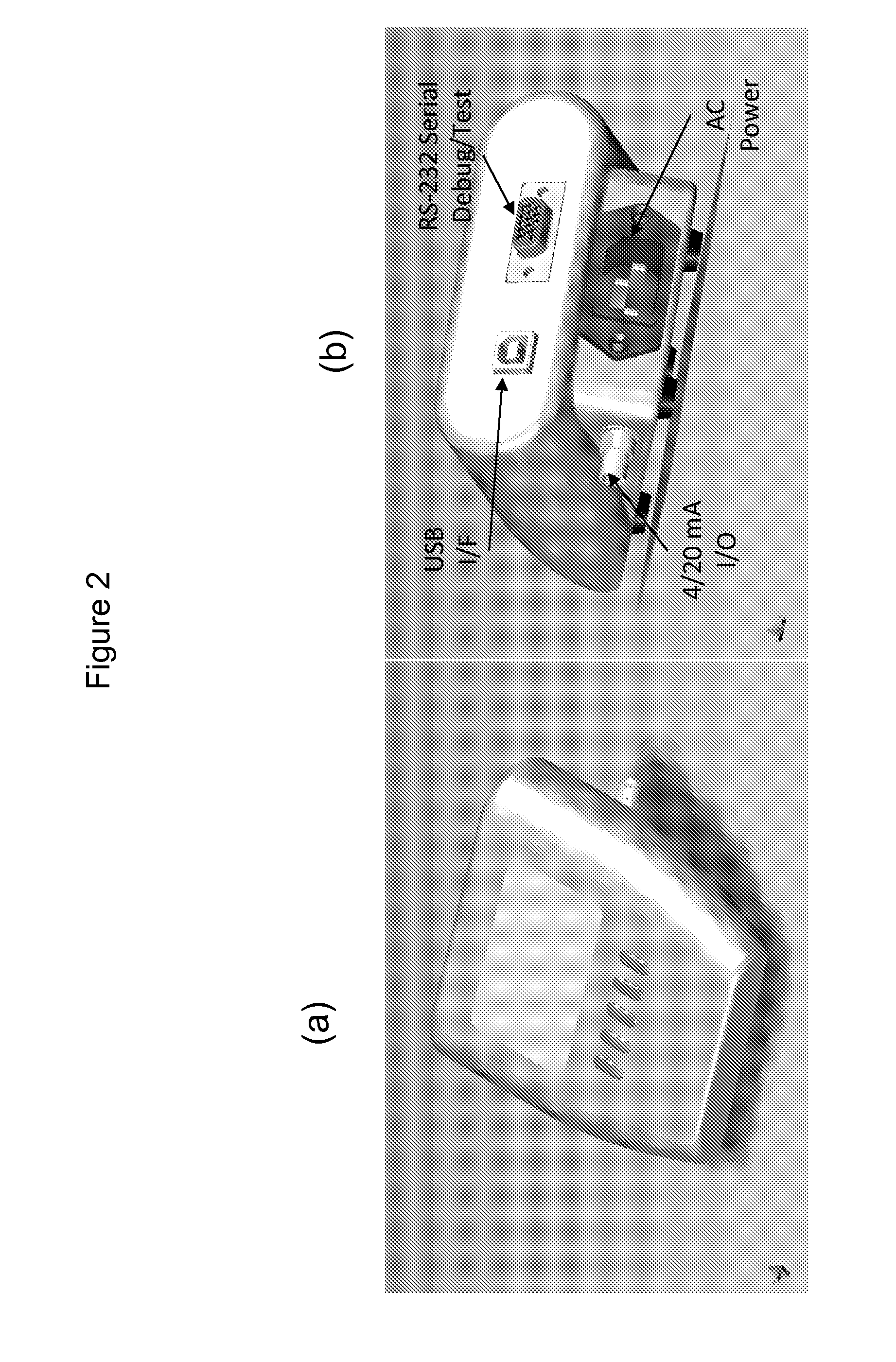Silicon Electrochemical Sensors
- Summary
- Abstract
- Description
- Claims
- Application Information
AI Technical Summary
Benefits of technology
Problems solved by technology
Method used
Image
Examples
example 1
Preparation of H-terminated Silicon Surface
[0224]Silicon wafers (oriented (111) or (100), cut into ca. 1×1 cm2 pieces) were cleaned using “Piranha” solution (concentrated H2SO4:30% H2O2, 3:1, v / v) at about 80° C. for 30 min and rinsed thoroughly with deionized water. Subsequently, the wafer pieces were oxidized in H2O2:HCl:H2O (2:1:8) at about 80° C. for 15 min, and in H2O2: NH4OH:H2O (2:1:8) at about 80° C. for another 15 min, rinsed copiously with deionized water. The cleaned Si(100) wafers pieces were then etched in 2.5% HF solution for about 15 nin. These procedures eliminate the native oxide layer of Si, yielding an H-terminated surface. The H-terminated substrates were quickly rinsed with deionized water, dried with nitrogen gas and were used immediately for the derivatization experiments. The Si(100) (10-90 Ωcm, p-type) was used for the experiments below.
example 2
Derivatization of H-Terminated Silicon Surface with Ferrocene Moieties
[0225]Approximately 10 mmol mesitylene solution of vinylferrocene (VFc) or ferrocenecarboxaldehyde (FcA) was put in a round bottom flask and bubbled with nitrogen or argon gas for at least 30 min. A piece of the H-terminated silicon substrate was then immersed in the solution and allowed to react with VFc or FcA for about 12 h under reflux at about 150° C. in an oil bath. During the reaction, the solution was also purged with nitrogen (or argon) to eliminate dissolved oxygen and to prevent the substrate from being oxidized. After the reaction, the substrate derivatized with VFc or FcA was rinsed with dichloromethane, acetonitrile and methanol, and dried under a stream of nitrogen gas. The derivatization of the H-terminated surface with ferrocene moieties as described in Example 2 is illustrated in FIG. 5.
example 3
Derivatization of H-Terminated Silicon Surface with Anthracene Moieties
[0226]Approximately 10 mmol mesitylene solution of vinylanthracene (VA) or anthraldehyde (AnA) was put in a round bottom flask and bubbled with nitrogen or argon gas for at least 30 min. A piece of the H-terminated silicon substrate was then immersed in the solution and allowed to react with VA or AnA for about 12 h under reflux at about 150° C. in an oil bath. During the reaction, the solution was also purged with nitrogen (or argon) to eliminate dissolved oxygen and to prevent the substrate from being oxidized. After the reaction, the substrate derivatized with VA or AnA was rinsed with dichloromethane, acetonitrile and methanol, and dried under a stream of nitrogen gas. The derivatization of the H-terminated surface with anthracene moieties as described in Example 3 is illustrated in FIG. 6.
PUM
| Property | Measurement | Unit |
|---|---|---|
| Temperature | aaaaa | aaaaa |
| Time | aaaaa | aaaaa |
| Molar density | aaaaa | aaaaa |
Abstract
Description
Claims
Application Information
 Login to View More
Login to View More - R&D
- Intellectual Property
- Life Sciences
- Materials
- Tech Scout
- Unparalleled Data Quality
- Higher Quality Content
- 60% Fewer Hallucinations
Browse by: Latest US Patents, China's latest patents, Technical Efficacy Thesaurus, Application Domain, Technology Topic, Popular Technical Reports.
© 2025 PatSnap. All rights reserved.Legal|Privacy policy|Modern Slavery Act Transparency Statement|Sitemap|About US| Contact US: help@patsnap.com



